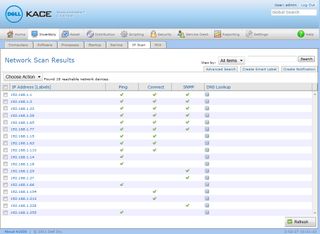IT Pro Verdict
Dell’s Kace K1000 systems management appliance provides a good range features and is comparatively easy to deploy. It’s also good value, as a lot of functions are included in the price — just bear in mind that Linux systems are poorly supported, the agentless inventory is of little use and the Kontainer application virtualisation feature is no longer available
Dell moved into systems management when it acquired Kace in 2010 and now provides a family of three appliances, each offering a variety of functions. The K1000 reviewed here is targeted at businesses with over 100 staff and focuses on hardware and software inventory, license compliance, software distribution, service desk facilities and patch management.

The Kace K1000 is designed to provide an out-of-the box management solution and comes supplied as a good-quality PowerEdge R610 1U rack server. Deployment in the lab was straightforward, and we started at the local console to provide the appliance with a fixed IP address.
Next, we moved over to the well-designed web interface and got things rolling with a quick network IP scan. This provides a list of all discovered systems, and shows whether they are contactable and have SNMP services installed.
The Dell Kace's agentless inventory feature can discover and catalogue all nodes on a network in real time, but we found this doesn't provide any worthwhile information. Without SNMP, all it will show is open ports, whereas SNMP also shows details about the CPUs, system name and network interface traffic statistics.

A quick network scan locates all your devices, but an agent must be deployed to get any meaningful inventory data.
An agent will need to be installed for full system information and inventory. This can be run manually on selected IP addresses, or the advanced provisioning option can be used to push the agent to all systems in an IP address range.
Dave is an IT consultant and freelance journalist specialising in hands-on reviews of computer networking products covering all market sectors from small businesses to enterprises. Founder of Binary Testing Ltd – the UK’s premier independent network testing laboratory - Dave has over 45 years of experience in the IT industry.
Dave has produced many thousands of in-depth business networking product reviews from his lab which have been reproduced globally. Writing for ITPro and its sister title, PC Pro, he covers all areas of business IT infrastructure, including servers, storage, network security, data protection, cloud, infrastructure and services.

